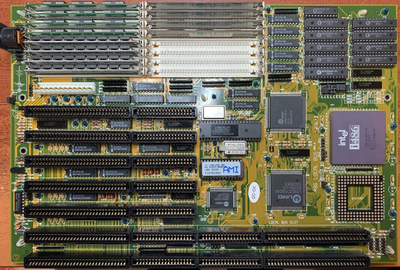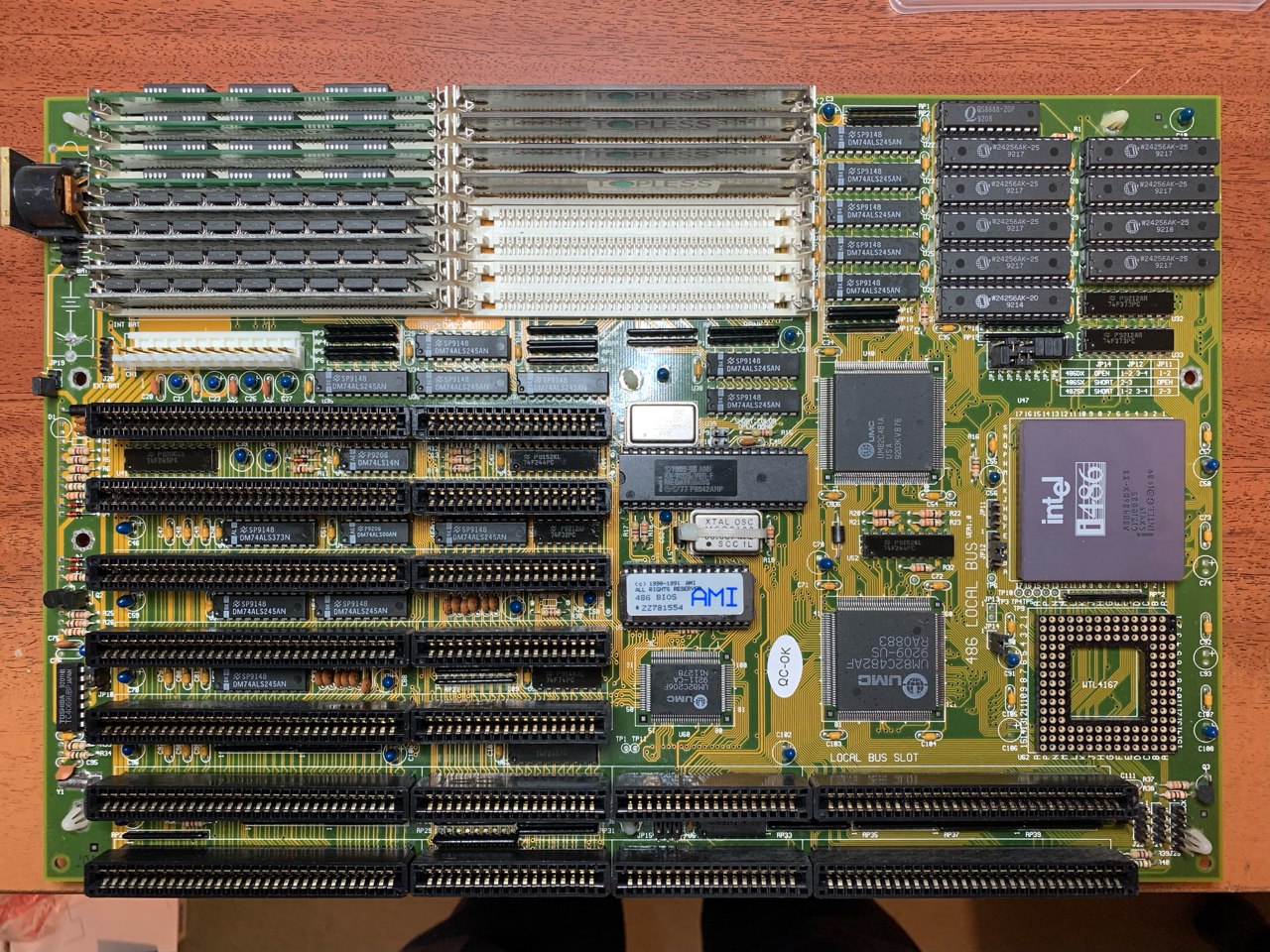First post, by stephen_usher
I've recently rescued a 486DX-33 machine which is displaying an issue when hard reset, either at boot or when the reset button is pressed. Basically, it's not booting at all.
It's a no-name board but the BIOS string suggests that it was made by "Lucky Star".
When I first got the machine 99% of the time it would not boot when powered on but would as soon as the reset button was pressed. However, after a number of hours of running it usually takes 10s of presses of the reset switch before it will boot. Once it does boot it is completely stable. I can run benchmarks and tests all day and it's as solid as a rock.
Using an oscilloscope on the BIOS ROM /CE pin shows the following sets of activity: None, brief spike down to 0V, square pulse to 0V, drop to 0V followed by two spikes to 5V, drop to 0V and stay there or boot. The BIOS POST diag ISA board shows smetimes the IRDY LED off or dimly glowing (one state per reset) unless the machine boots, in which case there is normal activity.
The PSU power rails are all good and clean (I've recapped the PSU) and power good comes up nicely. As far as I can trace it seems that the reset circuit between the reset switch, power-good circuti and the chipset is operating normally.
It "feels" like it's a capacitor, but there are no electrolytics and I'm not sure the jelly-bean tantalums fail in that sort of way.
So, any ideas?
Anyway, here's a picture of the board:

